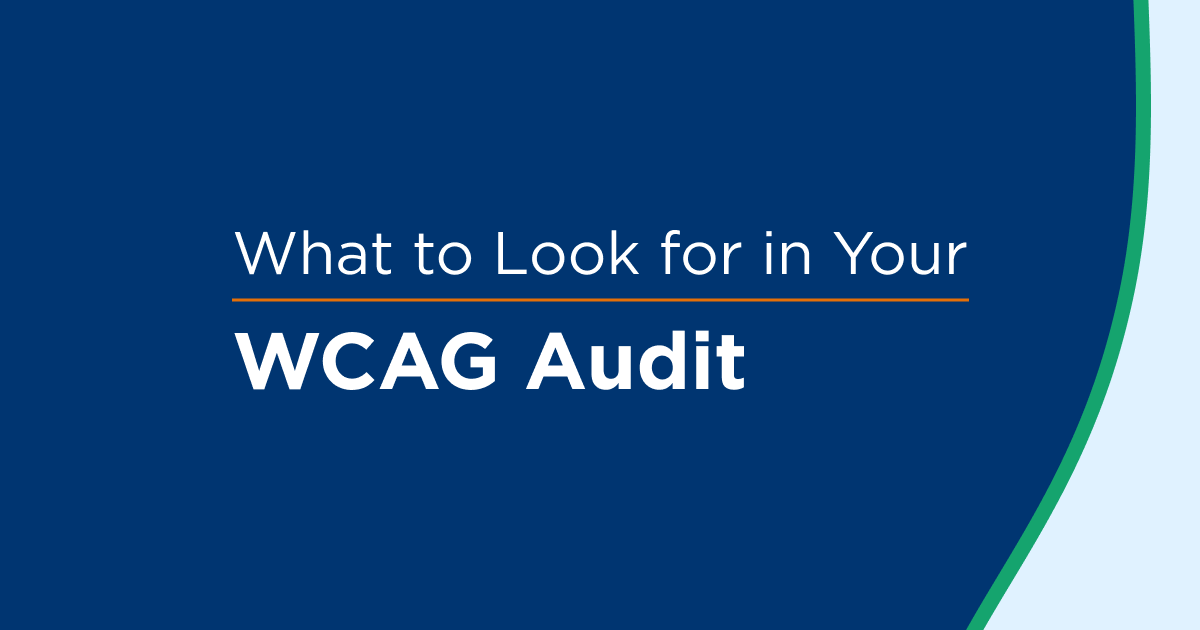Technology is quickly changing the way Americans access financial services. Nearly 40 percent of U.S. adults use apps or websites to bank or invest online. Accessible web content is becoming more crucial than ever. As online financial services continue to evolve, it’s important for companies to follow guidelines and regulations (such as the Americans with Disabilities Act, or ADA) related to digital accessibility for users with disabilities.
Banking and financial sites can be tricky—only web pages that are viewed before a site’s login feature are considered places of public accommodation covered by ADA Title III.
Unfortunately, only 1 percent of the internet’s 1,000 most popular sites meet general accessibility requirements. With about one in four U.S. adults living with some type of disability, a large portion of the American population remains underserved. Inclusivity can not only help build your brand, but it can also attract fiercely loyal customers.

Reaching compliance with the ADA may seem like a somewhat daunting task, but small steps can lead to major improvements that will not only attract users with disabilities, but also help your company avoid ADA lawsuits. The following tips can help make your front-facing website more ADA compliant and your interface more accessible—all of which are critical to running a modern financial service enterprise.
1. Take Advantage of Automated Testing
Automated testing is a critical starting point that will evaluate your site’s current accessibility level. It monitors key pages and can assess your entire site without having to evaluate each page individually. Automated testing is a great place to start for businesses that may have hundreds or thousands of templated product pages.
Automated testing analyzes accessibility status using real-time data. It looks over your entire site, making recommendations that can be seamlessly integrated into your overall design.
2. Use Simple Fonts and Text Styles
Text size, font, and style can communicate a lot about your brand, but if these aren't used consistently and logically, users can become confused or lost. Follow these guidelines:
- Emphasize important points by using bold or italic text.
- Break down information into bulleted lists.
- Avoid using long paragraphs or large blocks of text, which may be confusing for users with various print disabilities, such as dyslexia.
3. Implement User Testing
Automated testing can only take you so far. User testing should include both usability experts and anyone using assistive technology on a daily basis. Automated tools can’t flag every WCAG violation, which is why there’s a growing demand for user testing from the disability community.
To start an effective user testing program:
- Identify local activist groups or nonprofit organizations that work with people who have disabilities.
- Consult experts who have experience in the disability community.
- Identify friends, family members, or work colleagues who use assistive technology or may be living with various disabilities.
- Recruit your own testers with the help of databases like Knowbility.
4. Make Your Site Easy to Navigate
Your financial website should be accessible to users living with visual, auditory, mental, and physical impairments. If your website cannot be successfully navigated using tab only, you have some work to do in order to comply with the ADA. Elements like alt tags, labels, headers, and fonts should all be accessible. This compliance helps vendors who specialize in overlay design to identify any accessibility issues using automated tools.
Here are 4 ways you can make your site easier to navigate:
- Make sure that important information is in a consistent location.
- Screen readers scan from top to bottom, so present information in a linear fashion that won’t confuse visitors with visual impairments.
- Make sure disabled users can find specific information on your site quickly.
- Include a “Skip Navigation” feature at the top of your site, which allows screen readers to quickly find and access specific content.
5. Check for Proper Color Contrast
Color contrast is an accessibility issue often lost on marketing departments that prioritize aesthetic branding over effective communication. If the colors between your text and background or within images do not contrast enough (there is a defined ratio), color-blind users and other users with disabilities may be left out. Some tips for color contrast:
- Use high-contrast visual aids or color schemes for users who may be color-blind or visually impaired.
- Make sure that color is not the primary way that your site communicates messages. Example: Don’t display your lowest rates using the color green without also adding a description explaining that.
- Make sure that all text contains a color-contrast ratio of 4.5:1 against its background.
6. Make Sure All Media Assets on Your Site Contain Descriptions
Another major area of inaccessibility within financial services companies surrounds audio-visual media. If you have videos or audio files embedded within your site, these must be made accessible as well.
Try these tips for implementing descriptions on your site:
- Use audio descriptions or subtitles in various languages to make videos and images more accessible.
- Include audio cues that signal changes in gesturing, color, setting, and all visual elements.
- Add text captions and subtitles for users with hearing impairments.
Remediating your financial services website to be accessible to everyone and follow ADA guidelines may seem intimidating, but it’s more important than ever before. At least 160 million American adults use financial investment or banking apps and websites. Failing to serve those living with disabilities neglects a significant portion of the population and may eventually alienate even the most loyal customers.









